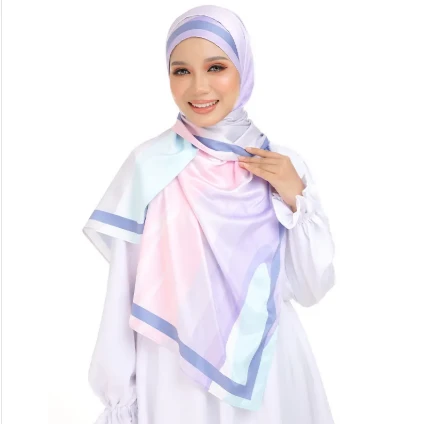Dec . 05, 2024 19:25 Back to list
Arafat Scarf Fashion Trend and Cultural Significance in Contemporary Style
The Arafat Scarf A Symbol of Identity and Resistance
The Arafat scarf, often referred to as the keffiyeh or ghutrah, is more than just a piece of fabric; it is a powerful emblem of cultural identity and political resistance. Originating from the Middle East, the scarf has become globally recognized, closely associated with Palestinian identity and the broader struggles of the Arab world.
Traditionally made from cotton, the keffiyeh features distinctive black and white or red and white patterns. Its practical use as a headscarf dates back centuries, providing protection against the harsh desert sun and wind. However, its significance has evolved over time. During the 20th century, especially during the rise of Palestinian nationalism, the Arafat scarf became a symbol of solidarity and resistance against oppression. It gained particular prominence during the leadership of Yasser Arafat, the former chairman of the Palestine Liberation Organization (PLO), who famously wore the scarf as a part of his public uniform.
The Arafat Scarf A Symbol of Identity and Resistance
In addition to its political connotations, the keffiyeh has also made its mark in the realm of fashion. Designers and brands around the world have incorporated the scarf into their collections, often without acknowledging its complex history. This commercialization has sparked debates about cultural appropriation and the ethics of profiting from symbols deeply rooted in political struggles. While many wear the keffiyeh as a trendy fashion statement, it is essential to recognize and respect its significance to those whose lives and identities are intertwined with the narratives it represents.
arafat scarf

The Arafat scarf’s symbolism extends beyond Palestine. It serves as an iconic representation of Arab dignity and culture, often uniting people across various nations and backgrounds. As conflicts in the Middle East continue to unfold, the keffiyeh can be seen as a rallying point for solidarity, inspiring movements for justice and human rights. Whether worn in daily life or during protests, the scarf fosters a sense of belonging among those who don it.
In recent years, the Arafat scarf has also found a place in contemporary art and popular culture. Artists frequently use the scarf as a motif to explore themes of identity, diaspora, and resistance. Its portrayal in literature and film further emphasizes its significance in the socio-political landscape, reminding audiences of the ongoing struggles faced by many in the region.
As the world continues to grapple with issues of oppression, conflict, and recovery, the Arafat scarf remains a poignant reminder of the power of symbols in uniting people and fostering resilience. For Palestinians, it is an enduring emblem of their fight for self-determination. For others, it may represent broader ideals of justice and human rights.
In conclusion, the Arafat scarf is much more than an accessory; it is a tapestry woven with threads of history, culture, and resistance. As it continues to inspire discussions and evoke strong emotions, the keffiyeh stands as a testament to the enduring strength of identity and the universal quest for freedom. Whether worn as a fashion statement or a political statement, the Arafat scarf will remain a significant symbol of hope and resilience for generations to come.
-
Traditional Tudung Designs in Malaysia
NewsJul.25,2025
-
The Spiritual Significance of Satin in Muslim Attire
NewsJul.25,2025
-
The Right Way to Wear Arab Scarves for Muslim Women
NewsJul.25,2025
-
Zikr Bead-Infused Cotton Voile for Continuous Remembrance
NewsJul.11,2025
-
The Cultural Significance of Tudung in Malaysia
NewsJul.11,2025
-
Satin Hijabs as an Expression of Faith in Daily Life
NewsJul.11,2025














